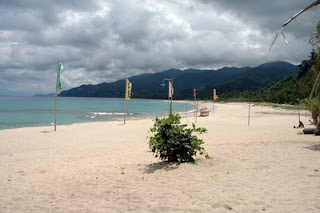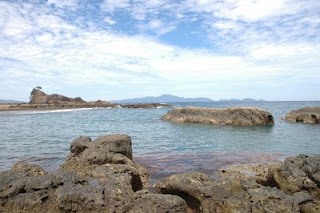
 Casiguran
Casiguran is a 3rd class municipality in the northern part of the province of Aurora, Philippines. It is located 121 km from Baler, the provincial capital. It is bounded on the northeast by Dilasag, on the southwest by Dinalungan, on the northwest by Quirino and southeast by the Pacific Ocean.
According to folk legend, the name
Casiguran was obtained from the word "Kasiguruhan" which means "safety" or "assurance". Safety means defense/fortress or sanctuary for sailing ships during stormy weather. On the other hand, assurance means that if an unmarried stranger comes to the place, he unavoidably falls in love with someone and eventually gets married and most of the time stayed for good.
Casiguran was founded by the Spanish Missionaries on June 13, 1609. But prior to their arrival, the early settlers of the place were the Dumagats/Aetas/Agtas followed by migrants from other places of the country. These migrants spoke different dialects such as Ilokano, Visayan, Bicolano, Pampango. Gaddang, Itawes and Ibanag. Thus, a "
kasiguranin" language evolved out of these dialects. To learn and see more the beauty of Casiguran, click
here.

 Dilasag, a municipality at the northernmost area of Aurora, offers a coast with kilometers upon kilometers of white sand beach alternating occasionally with forests, hills, and cliffs. Its undeveloped features and natural attractions offer tourists the sensation of discovering something new and unspoiled. Inaccessible to most transportation, Dilasag Coast is a true getaway.
Dilasag, a municipality at the northernmost area of Aurora, offers a coast with kilometers upon kilometers of white sand beach alternating occasionally with forests, hills, and cliffs. Its undeveloped features and natural attractions offer tourists the sensation of discovering something new and unspoiled. Inaccessible to most transportation, Dilasag Coast is a true getaway.

.JPG)













































